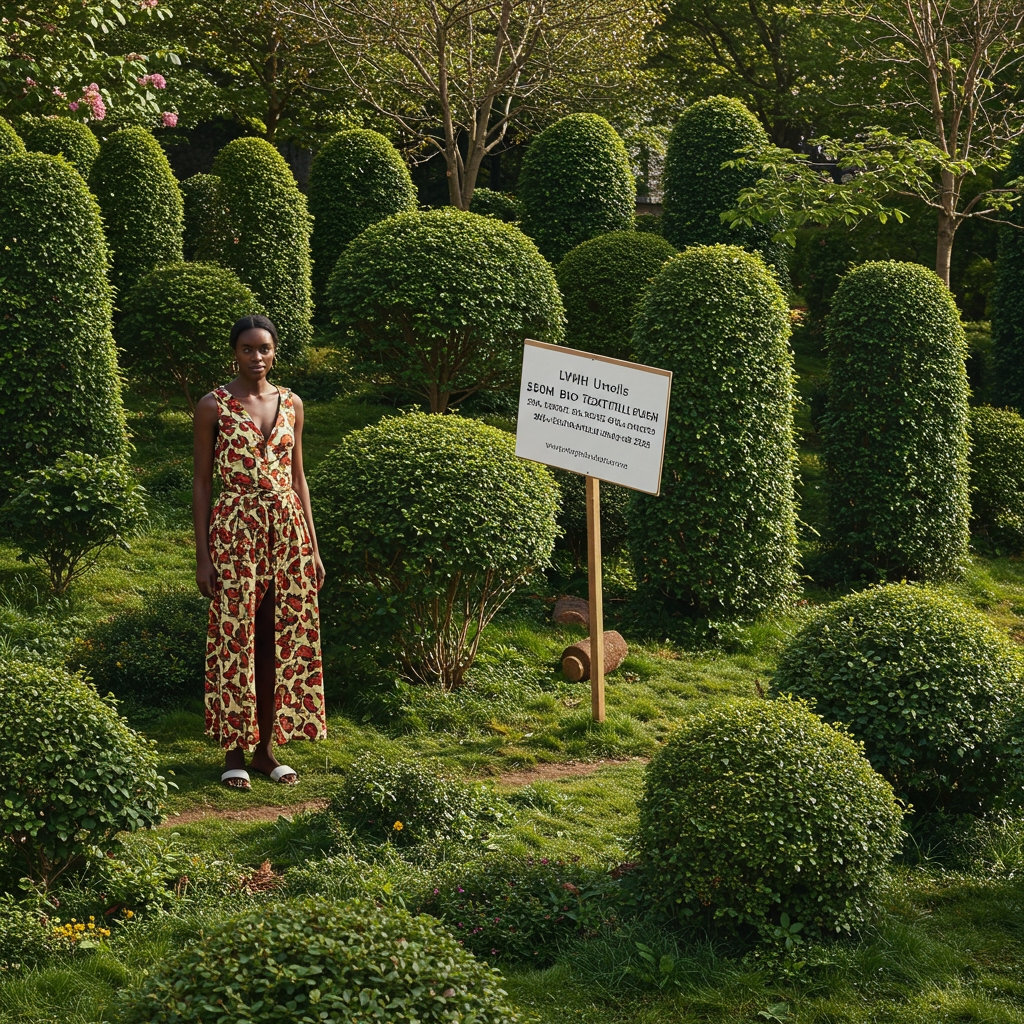LVMH Commits $500 Million to Accelerate Sustainable Material Innovation
Paris, France – LVMH Moët Hennessy Louis Vuitton, the world’s preeminent luxury conglomerate, announced a significant strategic investment on February 15, 2025, aimed at fundamentally transforming its material sourcing and production processes. The group revealed plans to allocate an impressive $500 million over the next three years, specifically targeting the research, development, and widespread integration of advanced bio-based and recycled textiles across its extensive portfolio of prestigious brands. This includes iconic houses such as Louis Vuitton and Dior, among many others.
The initiative underscores LVMH’s deepening commitment to environmental stewardship and represents a substantial step towards achieving a more circular and sustainable production model within the luxury sector. The half-billion-dollar investment is earmarked to accelerate innovation in material science, bridge the gap between cutting-edge research and scalable industrial application, and ultimately reduce the environmental footprint of its products.
Core Focus Areas: Bio-Based and Recycled Textiles
The investment will concentrate on several key areas deemed critical for achieving a disruptive shift in textile production. A primary focus is the scalable production of mycelium-based leathers, offering a bio-fabricated alternative to traditional animal or synthetic leathers with potentially lower environmental impact. Mycelium, the root structure of mushrooms, can be grown into materials that mimic the look and feel of leather, opening new possibilities for cruelty-free and biodegradable options in luxury goods.
Another crucial area is the development and integration of advanced biodegradable synthetic fibers. While synthetic fibers like polyester and nylon offer durability and performance, their persistence in the environment is a major concern. The investment aims to support the creation and adoption of next-generation synthetic materials designed to break down naturally at the end of their lifecycle, mitigating textile waste accumulation.
Furthermore, a significant portion of the funding will be directed towards improving and scaling up chemical recycling processes for common textiles like cotton and polyester. Mechanical recycling often degrades fiber quality, limiting its applications. Chemical recycling, however, can break down materials to their molecular level, theoretically allowing for infinite recycling cycles without loss of quality, thus closing the loop on textile waste and reducing the reliance on virgin resources.
Ambitious Sustainability Target Set for 2028
Central to this ambitious initiative is a clearly defined target: LVMH aims to increase the proportion of sustainable materials used across its collections to 30% by the end of 2028. This represents a substantial increase from the group’s current estimated usage, which stands at approximately 12%. Achieving this target within a three-year timeframe will necessitate rapid innovation, significant supply chain transformation, and close collaboration with material producers and technology providers.
This 30% goal encompasses materials that meet stringent sustainability criteria, including certified organic or recycled content, bio-based alternatives with proven environmental benefits, and fibers produced through processes that significantly reduce water, energy, or chemical usage. The shift towards these materials is expected to have a cascading positive impact on the group’s overall environmental performance, reducing greenhouse gas emissions, water consumption, and waste generated throughout the value chain.
Strategic Partnerships Drive Innovation
Recognizing that achieving these goals requires external expertise and technological leadership, LVMH is strengthening and forging new partnerships with pioneering material science companies. Collaborations with entities like Bolt Threads and Renewcell are highlighted as central to the strategy.
Bolt Threads is known for its work in bio-engineered materials, including Mylo, a mycelium-based leather alternative that LVMH brands have previously explored. Renewcell is a Swedish textile recycling company that has developed a process to recycle cotton and other cellulose-based textiles into a new, high-quality material called Circulose, which can be used to make new textiles.
These partnerships provide LVMH with access to cutting-edge technologies and scalable production capabilities that are essential for integrating these novel materials into luxury supply chains, which demand exceptional quality and consistency. By investing in and collaborating with these innovators, LVMH is not only securing future material sources but also helping to drive the development and commercialization of sustainable textile solutions for the broader industry.
Context and Future Outlook
The investment aligns with LVMH’s existing environmental strategy, LIFE 360 (LVMH Initiatives For the Environment), which sets targets across key areas like biodiversity, circularity, climate, and traceability. The focus on materials addresses a core component of the fashion and luxury industry’s environmental impact, which stems significantly from raw material production and processing.
This $500 million commitment signals LVMH’s intent to be a leader in the sustainable transformation of the luxury sector. By setting an ambitious target and backing it with substantial financial resources, the group is sending a strong signal to its supply chain partners, competitors, and consumers about the future direction of luxury goods – one that increasingly values innovation, environmental responsibility, and circularity. The success of this initiative is expected to influence material sourcing strategies across the industry and accelerate the adoption of next-generation sustainable textiles on a global scale.





